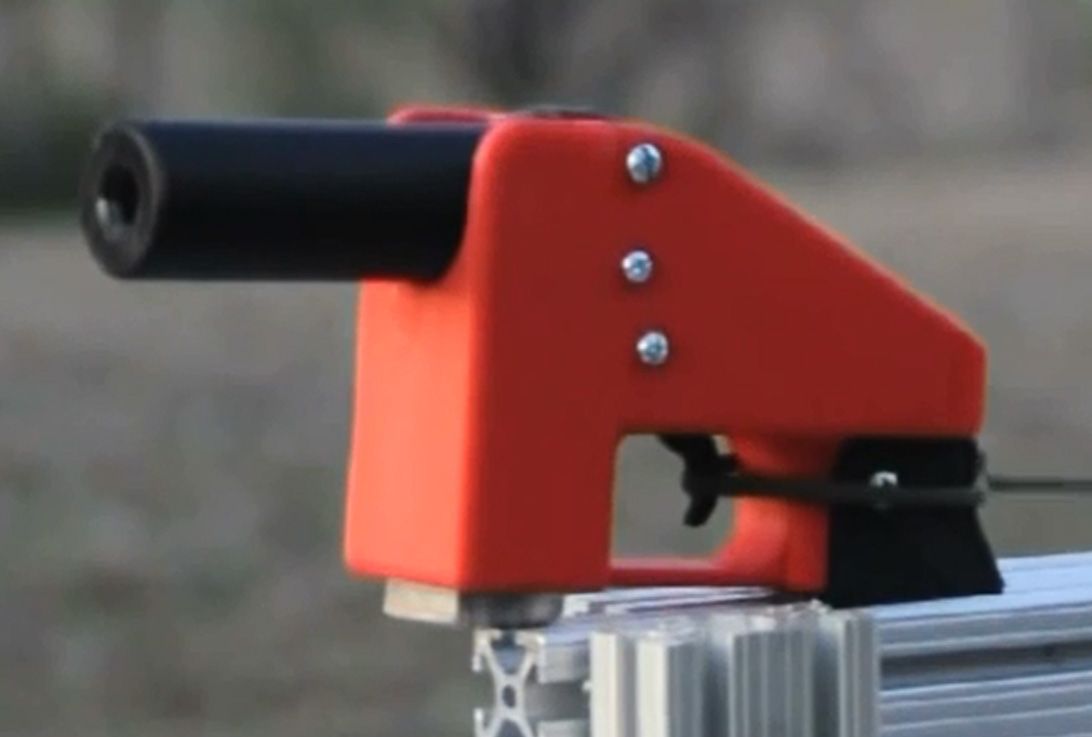Could 3D Printing Spark a Gun Battle?

The wonders of 3D printing, and the technology's potential to revolutionize the world of manufacturing, have thrilled entrepreneurs, tinkerers, government officials and the business community.
But a few skeptics aren't jumping on the 3D-printing bandwagon quite so enthusiastically, and have warned that there's a dark side to 3D printing — particularly the ease with which people could make their own 3D weapons.
Last Thursday (Nov. 21), Philadelphia took the proactive measure of banning guns made by 3D printing, also referred to as additive manufacturing. The City of Brotherly Love reported 331 murders in 2012, according to FBI statistics, making it one of the deadliest cities in the United States. [The 10 Weirdest Things Created By 3D Printing]
The possibility of homemade guns has aroused the ire of gun-control advocates as much as it's sparked the excitement of gun aficionados. In 2012, a former University of Texas law student named Cody Wilson alarmed law enforcement officials when his nonprofit organization, Defense Distributed, posted plans on the Internet for making a 3D-printed plastic gun.
Evading metal detectors
Wilson's gun, the so-called "Liberator," is made of ABS plastic and is capable of killing someone, according to test results from the U.S. Bureau of Alcohol, Tobacco, Firearms and Explosives (ATF).
"The bottom line is, the penetration results demonstrated that the Liberator is a lethal weapon," Earl Griffith, chief of ATF's firearms technology branch, told the Huffington Post. "The .380 bullets fired from the Liberator penetrate sufficiently to reach vital organs and perforate the skull."
Sign up for the Live Science daily newsletter now
Get the world’s most fascinating discoveries delivered straight to your inbox.
Plans for making the Liberator were downloaded more than 100,000 times before federal officials stepped in and ordered Defense Distributed to remove the online information earlier this year. Because it's made of plastic, the gun could slip past metal detectors and into courtrooms, government offices, airports, schools and other venues where firearms are strictly prohibited.
3D printers: silly to sublime
Most uses for 3D printing run the gamut from the essential to the silly. Medical researchers are hoping to make customized human organs like hearts within a decade, reducing the need for donor-organ transplants. Designers in Australia have developed a 3D-printed horseshoe made of titanium, and dessert chefs in Japan have discovered a way to create a customized, 3D-printed version of a person's face made of chocolate.
But the threat of plastic guns slipping past security desks and into federal buildings or criminal courtrooms has alarmed officials at all levels of government. Rep. Steve Israel (D-N.Y.) is sponsoring a federal bill that would update a law banning undetectable firearms to include language addressing 3D-printed weapons.
While Israel's bill appears to be stalled in a House committee, a similar bill sponsored by Sen. Chuck Schumer (D-N.Y.) is wending its way through the Senate, according to the Washington Post.
Heavy metal
And gun-control advocates who worry that a rash of deadly plastic weapons will soon be unleashed on helpless citizens now have a new fear: 3D-printed guns made of metal, designed by a company called Solid Concepts. The plastic Liberator has shattered in some tests, but the metal guns — made with a 3D-printing process known as direct metal laser sintering, or DMLS — appear to be sturdy and reliable.
The concern that these guns could be made and used by people who would fail a standard background check — felons, wanted criminals, certain individuals with a history of mental health problems — has added to the impetus for some kind of control on their use, even if measures like Philadelphia's are largely symbolic.
"It's all pre-emptive," Steve Cobb, director of legislation for Philadelphia Councilman Kenyatta Johnson, told Philadelphia magazine. "It's just based upon Internet stuff out there."
Follow Marc Lallanilla on Twitter and Google+. Follow us @livescience, Facebook & Google+. Original article on LiveScience.













